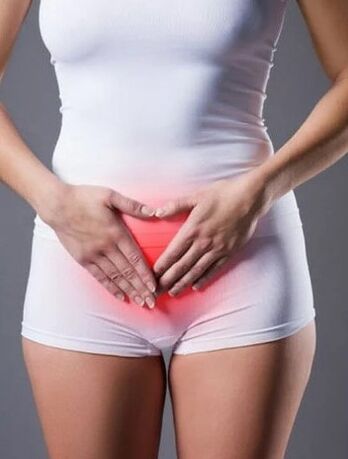Cystitis is a local inflammatory process in the bladder. What follows is inflammation of the urethra or urethritis.
Cystitis is characterized by:
- After urination, burning and residual sensation of rubber
- Pain in urination
- Pain syndrome is located in the lower abdomen and waist areas
- Urinary incontinence is possible
- Changes in urine color (bloody or muddy)
- Body temperature rises to fever
- Deterioration of the overall well.
Causes of the disease
Factors causing cystitis:

Infection factors:
- Given the proximal location of the anus and urethra (female), it is represented by E. coli, streptococci and/or Staphylococcus.
- sexual infection (urea magnification and mycoplasma);
- Instrumental intervention or introduction of infection in the urethra or bladder (microbials that usually have Gram-negative cell walls);
- fungi, chlamydia, virus;
- Inflammation of a person's urogenital organs (seed bubbles, appendages of testicles, etc. );
- Tumor formation;
- anatomical deviation;
- Allergic to care products (vaginal deodorant, colored toilet paper, talc powder, various perfume soap);
- Rare urination (characteristics of older people).
diagnosis
The following laboratory methods are used to diagnose diseases:
- Blood tests (general) show changes, which have a moderate inflammatory process
- Urine (general) analysis shows that color changes caused by the presence of uric acid, white blood cells, red blood cells, proteins, and in some cases, have a odor
- Through pesticide analysis of urine, you can study organs and their condition of the genital and reproductive system by calculating white blood cells, red blood cells, and cylinders in the urine. The results of this study are affected by the correctness of the material materials and patients adhere to personal hygiene rules.
- The pathogenic bacteria can be detected by increasing the amount of nitrate in the urine and detected using the indicator bar
- The presence of pus in the urine was detected by the leukocyte reaction.
In addition to laboratory diagnosis of cystitis, instrumental methods were also performed, among which the most common ones were Cytoscape, biopsy, ultrasound, ultrasound, STD/STPP, etc.
complication
With the non-free nature of treatment, cystitis can not only become a chronic form, but can also complicate diseases such as:
- State of disturbed renal function - reduced volume of urine released
The inflammation extends to the mucosa and enters the muscle layer of the kidney, which is replaced by the result of the tail tissue, which results in a decrease in the size of the kidney and the elasticity of the capsule.
PMR - damage to valve structure, the results reveal urine to the kidneys - back into the kidneys. At the same time, the localization of infection in the urinary system is preserved and a chronic form of pneumonia occurs, scarring of kidney tissue and completely damaged renal function.
Treatment of diseases
The treatment of the disease is based on eliminating the root cause of microbial inflammation – cystitis, which is usually caused by a reduced immune status. Therefore, pathological treatment involves the use of the following drugs:
- Anti-inflammatory drugs (NSAIDS)
- Antibacterial drugs
- Immunomodulator.
Risk Group
The risk group is weakened immunity, infected with HIV and pregnant women.
prevention
Measures to prevent cystitis:
- Lack of hypothermia
- Check with gynecologist every six months
- Strictly adhere to hygiene, especially during sexual contact
- Reject narrow (thong) and synthetic underwear
- Care for adequate lubrication during intimate relationships
- Proper food and diet
- Prevent constipation
- Strengthen immunity.
Diet and lifestyle
In the manifestations of pathological signs, it is necessary to limit the use of solid foods, replaced with broth, yogurt, mashed potatoes and large amounts of liquid. After the acute symptoms decrease, a diet that allows for a gradual introduction of solid food from cereals, nuts and beans. Various freshly squeezed juices (vegetables and fruits) are useful to the human body.
When there is a fever, bed rest should be observed and a compressed and warm bathroom should be used. You can use cold pressing to eliminate stagnation.





























